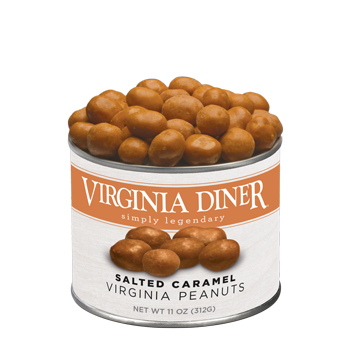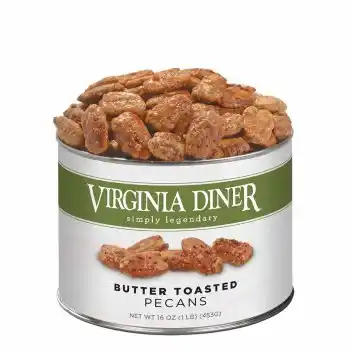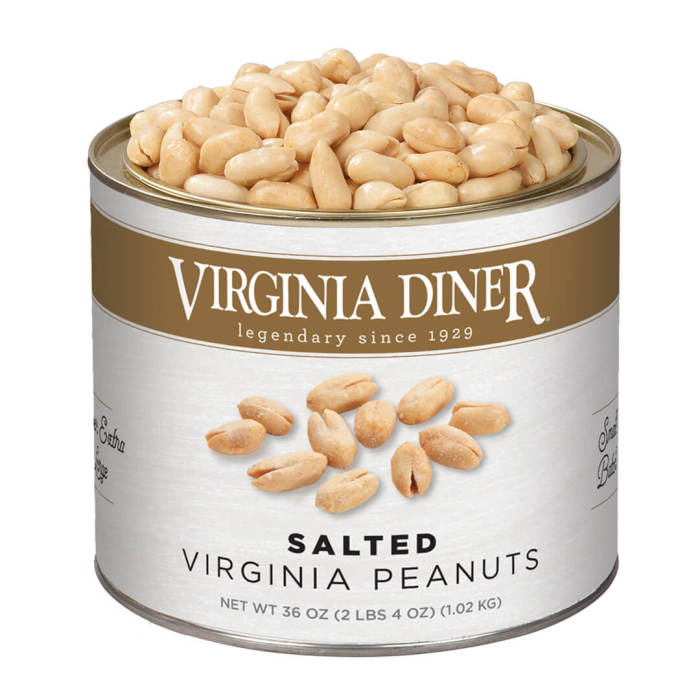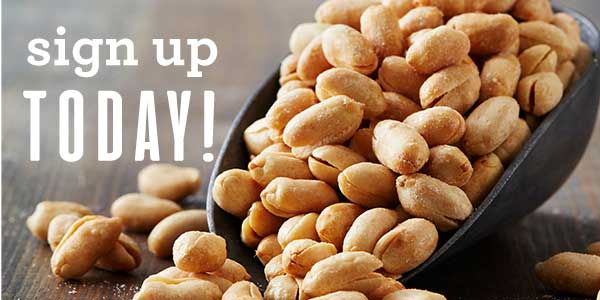How Do Peanuts Grow?
Peanuts are very interesting plants, botanically speaking, and we're here to share some fun peanut facts!

What Are Peanuts?
Peanuts are the seeds of the peanut plant, which are formed in the familiar, fibery pods that we love to crack open at the ballpark.
Unlike pecans, almonds, pistachios, walnuts, and cashews, peanuts do not grow on trees — no, they are not tree nuts!
Peanuts — their botanical name is Arachis hypogaea — are actually legumes, related to peas, beans, and lentils, and grow on bushy plants.
When farmers harvest their peanut crops, they save a portion of seed pods for planting the following growing season, and sell the rest for processing for food products (like peanut butter) and snacks. So, the peanuts we eat are the very things that get planted in the ground!
Where Are Peanuts Grown?
In the U.S., peanuts are grown mainly in the south and east, where the sandy soils and hot, sunny climate are most favorable for successful harvests.
Peanut country includes Alabama, Arkansas, Florida, Georgia, Louisiana, Missouri, Mississippi, North Carolina, New Mexico, Oklahoma, South Carolina, Texas and, of course, Virginia.
The Growing Habit of the Peanut Plant
As we hinted above, peanut plants have a unique growing cycle, compared to other edibles. There are many other plants in the plant kingdom that produce seed pods for both propagation and eating — including the peanut's popular spring-growing cousins, snap peas and snow peas.
But peanuts are different in that the process begins above ground, and then moves underground to complete seed formation and ripening: The plant is above ground, but the peanuts grow underground! Here's how it works:
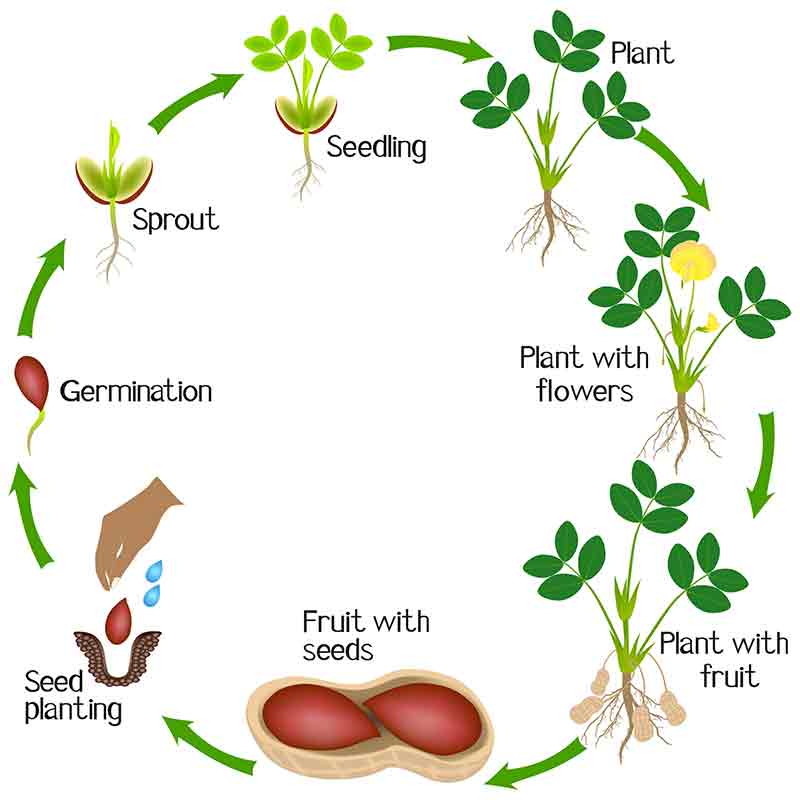
- The peanut (the seed) is planted in the ground (usually in May).
- The peanut germinates and sprouts, emerging above ground to form stems and oval-shaped green leaves.
- The maturing plant blooms and produces special stem-like structures called "pegs."
- On the tip of each peg is a seed pod.
- The pegs angle downward and burrow into the ground, where the seed pods — with peanuts inside — grow and mature.
- At the end of the growing season in September or October, the peanut plants are harvested.
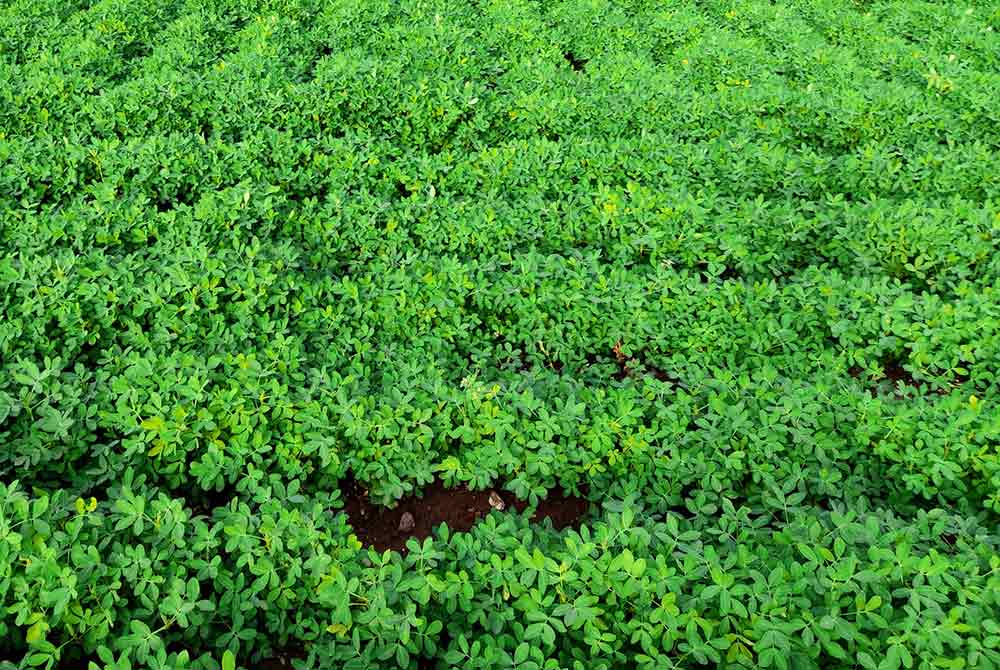
A field of peanut plants.
How Are Peanuts Harvested?
Most commercial farmers grow peanuts in large, rowed fields. At the end of the season, when the plants are mature and the seed pods have fully formed, farmers use large combines that lift the entire plants from the ground and turn them over, so that the seed pods that were underground are now exposed to the air and sunlight.The plants are left to dry in the fields for a period of time, so that the seed pods containing the peanuts begin to cure (that is, to dry and stabilize, halting growth and preventing rot). As you might guess, weather is a key factor here, as there needs to be a rain-free stretch!
The peanuts then undergo further drying in contained spaces, such as trailers or drying rooms, using heat and air movement to bring them to proper levels of moisture for consumption.
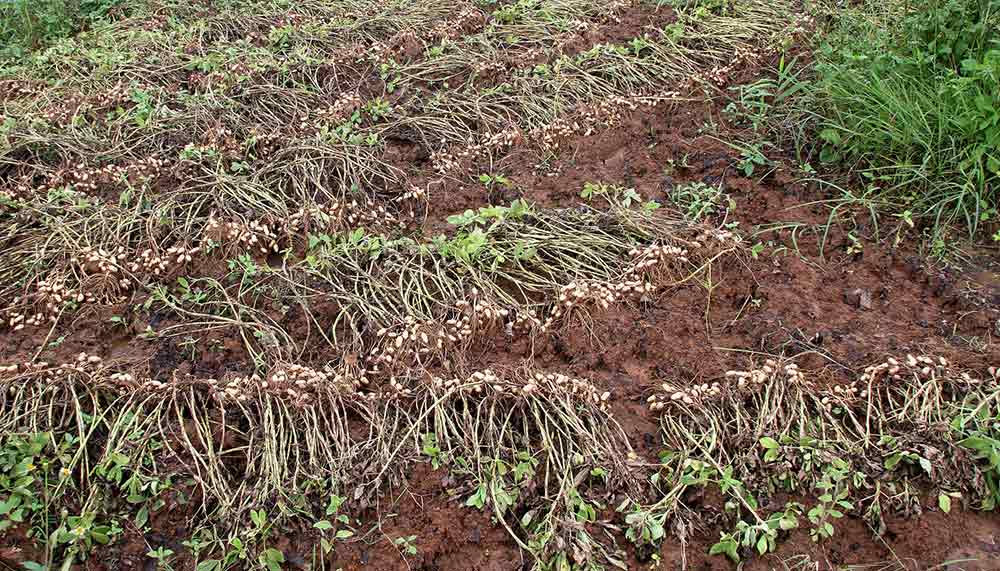
Harvested peanut plants drying in the sun.
And that's how peanuts get from the ground to you! Learn more about peanuts and peanut nutrition, and or browse our selection of gourmet Virginia peanuts!

